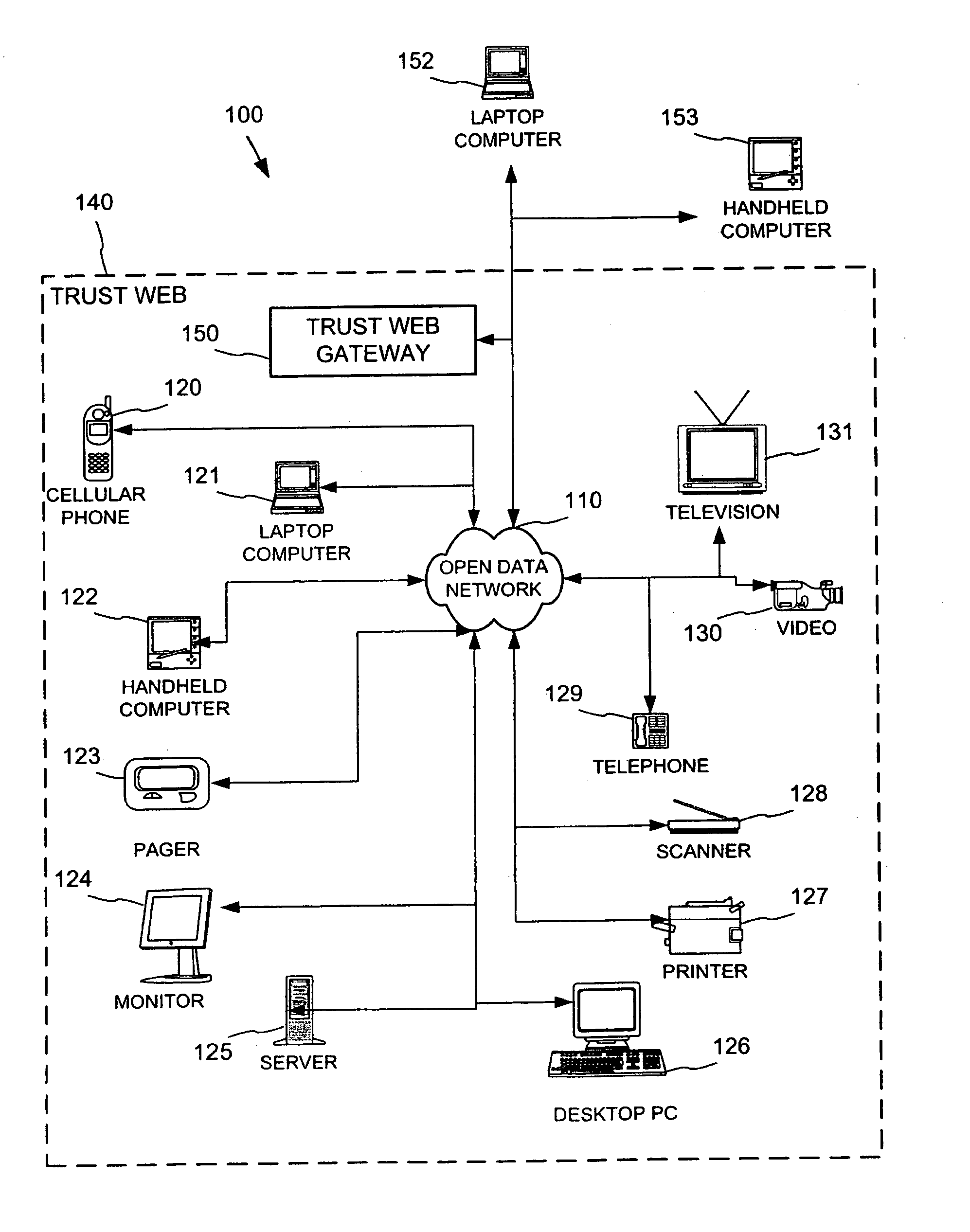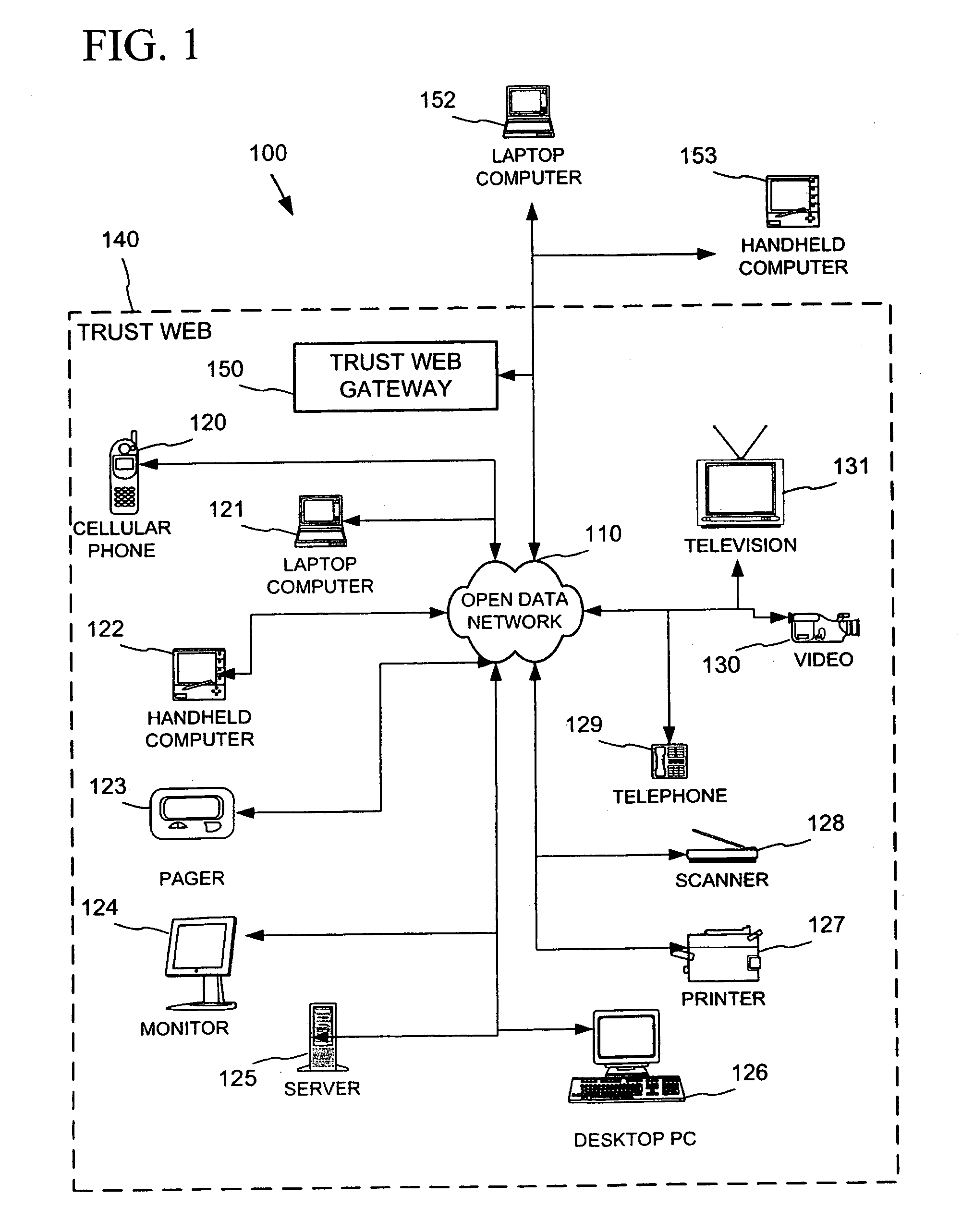[0002] The cost of computing and networking technologies have fallen to the point where computing and networking capabilities are now being built into the design of many electronic devices in the home, the office and public places. The combination of inexpensive and reliable shared networking media with a new class of small computing devices has created an opportunity for new functionality based mainly on the connectivity among these devices. This connectivity can be used to remotely control devices, to move audio, video and still images in the form of
digital data between devices, to share information among devices and with
the Internet and to exchange structured and secure digital data to support things like electronic commerce. A prevalent feature of these connectivity scenarios is to provide remote access and control of connected devices and services from another device with
user interface capabilities (e.g., a universal remote controller, handheld computer or digital assistant,
cell phones, and the like). This trend of ubiquitous and pervasive networked computing leads toward a world in which all types of devices are able to effortlessly and seamlessly interconnect and interact.
[0003] Peer networking connectivity protocols are now being introduced to facilitate connectivity among these pervasive networked computing devices, such as by enabling a device to dynamically join a network, obtain an address on the network, convey its capabilities, and discover the presence and capabilities of other devices while avoiding burdensome set-up, configuration and
software driver installation by the user. Examples of current such peer networking connectivity protocols include
Universal Plug and Play (UPnP), JINI, HAVI, Salutation, and others.
[0010] Existing solutions to the
key management problem, however, are inappropriate to secure communications in many applications of a peer networking connectivity protocol, due to their complexity,
code size, requirement for a
server intermediary, and / or requirement for
end user configuration. The
Kerberos protocol, for example, requires a
Key Distribution Center (KDC) or trusted
Kerberos server to manage an exchange between two devices to establish a “
session key,” for
encryption of the devices' intercommunications during a session. (See, e.g., J. G. Steiner, B. Clifford Neuman, and J. I. Schiller, “
Kerberos: An
Authentication Service for Open Network Systems,” Usenix Conference Proceedings, March 1988; and J. Kohl and C. Neuman, “The Kerberos Network
Authentication Service (V5),” IETF RFC 1510, September 1993.) Peer networking connectivity protocols desirably facilitate peer-to-peer interaction of devices without requiring the presence of a central server on the network.
[0012] The present invention provides ways to secure communications in a peer networking connectivity protocol, such as to prevent discovery and other interactions with untrusted devices, while minimizing user configuration requirements. In one embodiment described herein, communications in a peer networking connectivity protocol among at least one class of trusted devices on a network are encrypted with a group cryptographic key. These devices respond only to discovery requests that are encrypted using the group cryptographic key, and send announcements that also are encrypted using the group cryptographic key. This
encryption of the devices' peer networking connectivity communications using a
group key effectively forms a trust web that permits peer networking connectivity among the trusted devices, while preventing untrusted devices that have not been keyed with the group cryptographic key from conducting discovery or accessing services of the trusted devices.
[0015] This re-keying process has the
advantage that only the user who has possession of the
new device and its device-specific cryptographic key
label is able to key the
new device. Further, since the device is initially keyed to accept only peer networking connectivity protocol communications that are encrypted with the device-specific cryptographic key, the device is first re-keyed with the user's group cryptographic key before it is able to inter-operate with the user's other devices. This helps to prevent outside others who may
gain access to the user's network from keying the user's devices, and helps prevent any tendency of consumers to leave initially un-keyed devices un-keyed (and hence open to possible discovery and control by outsiders as discussed above).
[0017] In a further embodiment, a gateway acts as a two-way adapter between a “guest” device keyed with a “guest” cryptographic key and the trust web devices that are keyed with the group cryptographic key. The gateway converts communications in the peer networking connectivity protocol encrypted using the guest cryptographic key into communications encrypted using the group cryptographic key, and vice-versa. This enables the guest device to inter-operate in the trust web without having to provide the group cryptographic key to the guest device, which could potentially compromise the security of the trust web.
 Login to View More
Login to View More  Login to View More
Login to View More 


